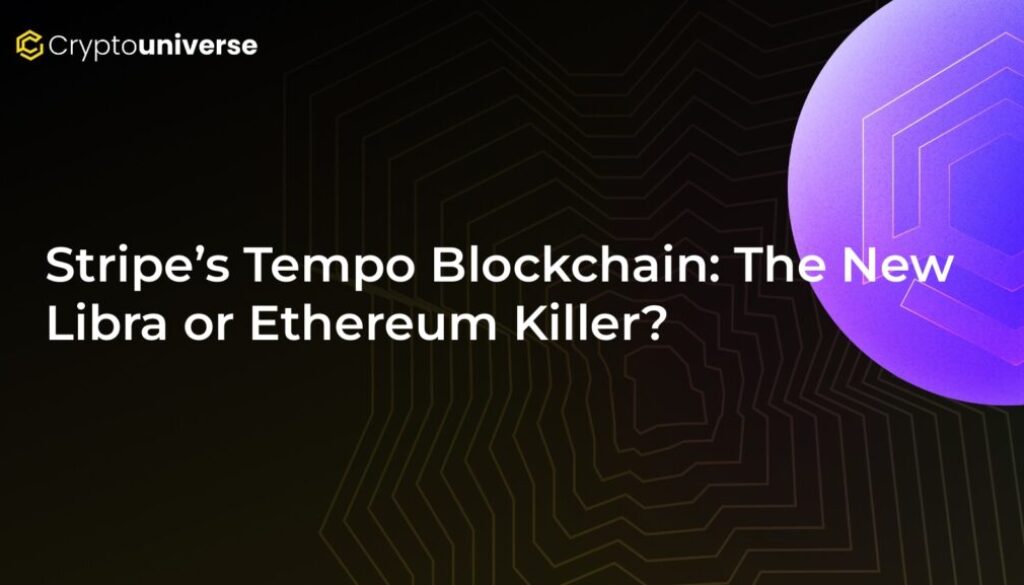Stripe’s Tempo Blockchain: The New Libra or Ethereum Killer?

Stripe Enters the Blockchain Arena with Tempo
The world of crypto payments just got a massive new contender. Fintech giant Stripe, in collaboration with venture capital firm Paradigm, has officially unveiled Tempo, a new Layer-1 blockchain built from the ground up for one primary purpose: payments. Described as a “payments-first” network, Tempo is designed to optimize stablecoin transactions, a move that has sent shockwaves through the industry and ignited a firestorm of debate. The central question on everyone’s mind is whether this is a genuine step forward for crypto adoption or a move that could centralize the payments landscape. Is Stripe building
What Does a “Payments-First” Blockchain Mean?
Unlike general-purpose blockchains like Ethereum, which are designed to support a vast array of applications from DeFi to NFTs, Tempo has a laser focus. The “payments-first” model prioritizes speed, low cost, and a seamless user experience specifically for stablecoin transfers.
By building a dedicated Layer-1 (L1) blockchain, Stripe aims to provide a direct on-ramp for its massive user base of merchants and customers. This approach allows users to access on-chain payments without navigating the often complex world of bridges and Layer-2 (L2) solutions, potentially lowering the barrier to entry for millions. This strategic choice may explain why major fintech players often prefer the control and simplicity of a bespoke L1 over building on existing infrastructure.
Déjà Vu: Is Tempo Just Libra 2.0?
The moment Tempo was announced, comparisons to Libra, Meta’s (formerly Facebook) ill-fated crypto project, began to fly. Both projects involve a major tech company aiming to revolutionize payments with a dedicated blockchain. However, the context has changed dramatically since Libra was shut down by intense regulatory pressure.
Today, crypto enjoys far greater political acceptance and institutional support. As Ryan Adams of Bankless noted, the new venture could be seen as “Libra v2 but with a political climate that won’t strangle it in the crib.” This time, the ambition might just have a fighting chance. However, its success isn’t guaranteed; Tempo’s ultimate value will be determined by its ability to attract real, substantial payment volume from merchants and users.
The Crypto Community is Divided: Hype vs. Skepticism
While the potential for mass adoption is tantalizing, many industry experts remain skeptical, questioning Tempo’s technical foundations and Stripe’s ultimate motives.
Concerns Over Neutrality and Technical Choices
One of the most significant points of contention is Tempo’s claim of “neutrality.” The project proposes allowing users to pay for gas fees using various stablecoins, rather than a single native token. While this sounds user-friendly, critics argue it introduces significant risks.
“There is a reason why successful L1s only accept their own native token for gas. The counterparty risk of doing it any other way is high and only grows if the chain succeeds…”
This approach could create conflicts of interest for stablecoin issuers and undermine the economic security and decentralization of the network. Furthermore, some technical experts have questioned the need for a new L1 in 2025, suggesting the stated motives might be more about business control than technological necessity.
“There might be business reasons for a Stripe L1, but IMO the cited technical motives are a bit sus in 2025,” commented the CEO of Mysten Labs.
The Ripple Effect: Who Wins and Who Loses?
Tempo’s entry is poised to reshape the competitive landscape. Its direct targets are the current kings of stablecoin volume: chains like Tron, Solana, Polygon, and various Ethereum L2s. If Stripe can successfully onboard even a fraction of its merchant network, it could divert a significant flow of stablecoin liquidity away from these established players.
An Unexpected Boost for Infrastructure?
Interestingly, the fragmentation of the blockchain ecosystem could be a boon for certain sectors. The creation of another major L1 will increase the demand for services that connect disparate networks. This puts infrastructure players in a prime position to benefit, including:
- Cross-chain bridges: Essential for moving assets between Tempo and other chains like Ethereum or Solana.
- Oracle providers like Chainlink (LINK): Needed to bring real-world data on-chain and facilitate complex interactions.
- On-chain payment providers: Companies that specialize in crypto payment gateways could see increased business.
Is This Bullish for Ethereum?
The impact on Ethereum is more complex. On one hand, bringing millions of new users into the crypto fold via Stripe is a net positive for the entire space, and these users may eventually explore Ethereum’s vast DeFi ecosystem. On the other hand, analyst Ignas cautioned that it’s difficult to see this as a direct bullish signal for ETH, as Tempo will compete directly for the payment volume that would otherwise flow through Ethereum’s L2 networks.
The Verdict: A New Competitor Has Entered the Ring
Stripe and Paradigm’s Tempo is more than just another blockchain; it’s a calculated move by a fintech titan to claim a piece of the on-chain payments pie. While it faces valid criticism regarding its technical design and claims of neutrality, its potential to onboard millions of users cannot be ignored.
Whether Tempo becomes a dominant force in stablecoin payments, a true competitor to Tether and Circle, or simply fades into the background depends entirely on its execution. The crypto world will be watching closely to see if Stripe can convert its massive off-chain influence into on-chain dominance.


